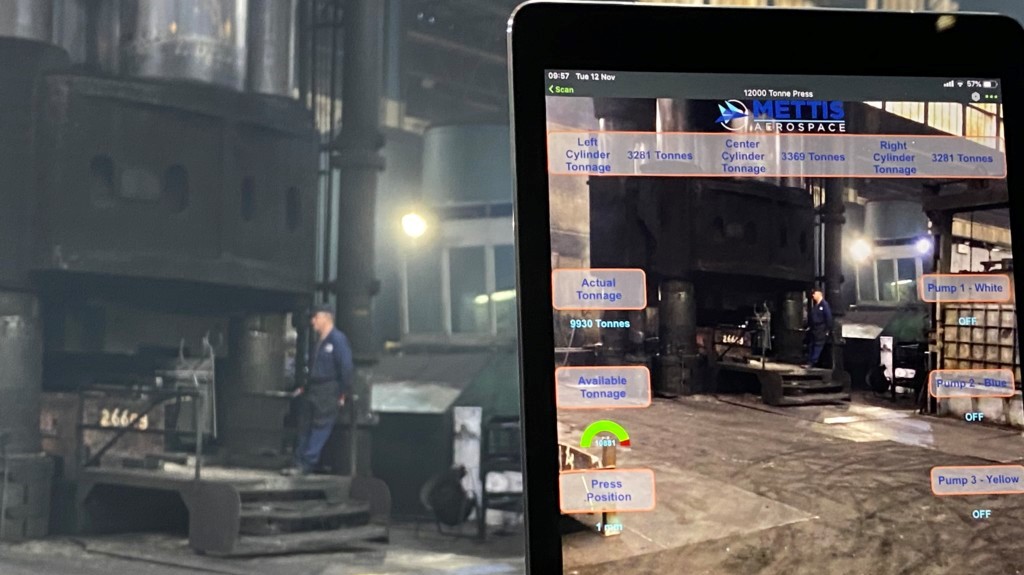WBA touts successful industrial Wi-Fi 6 trials
Wi-Fi 6 promises fast speed, greater capacity and ultra-low latency

Members of the Wireless Broadband Alliance (WBA) have completed the first trials of Wi-Fi 6 in a factory setting, claiming the results demonstrate the technology’s suitable for industrial use cases.
Among other things, Wi-Fi 6 enables faster speeds, increase capacity and improved performance in congested areas or during periods of high demand. Wi-Fi 6 kit will also support speeds of up to 10Gbps.
The trial at Mettis Aerospace, whose customers include Rolls Royce, Airbus, and Boeing is the first of its kind in the world. It was selected because of the high number of mission critical appliances and because factories can be difficult places to connect because of noise and potential interference. Foe example, large quantities of metal can disrupt radio signals.
- 5G: Everything you need to know
- Wi-Fi 6 certification program sets minimum standard
- Wi-Fi 6 kit to be half of the market by 2024
Wi-Fi 6 trials
A Wi-Fi 6 network was constructed across the 27-acre site, with Mettis able to use tablets to assess machine performance, conduct large scale file transfers, and deploy IoT sensor and mixed reality applications. Speeds of 700Mbps were achieved, with latency below 6 miliseconds.
“The Mettis facility is an especially challenging environment for wireless communications with furnaces, presses and heat, a lot of moving heavy machinery and the presence of dust and in-air particulates,” said WBA CEO, Tiago Rodrigues.
“Nevertheless, the field tests in this highly charged atmosphere have proven that Wi-Fi 6 technology works well and can play a vital role within the industrial enterprise and IoT ecosystem. If Wi-Fi 6 can deliver highly reliable, high quality and high bandwidth communications in this type of factory environment, then it can deliver it almost anywhere.”
“The Wi-Fi 6 infrastructure installed as part of the trials has exceeded our expectations in terms of performance, reliable connectivity and consistent coverage across the target area,” added Dave Green, Head of IT, Mettis Aerospace. “We are seeing immediate benefits in terms of the data we’re now able to collect and use. Moving forward, we will be able to vastly increase the data we collect from devices across our business, enhancing our manufacturing processes, reducing variability and increasing productivity.”
Sign up to the TechRadar Pro newsletter to get all the top news, opinion, features and guidance your business needs to succeed!
Wi-Fi 6 is also set to transform the consumer market. ABI Research predicts that demand for higher speed applications that require lower latency will see sales of wireless consumer premise equipment (CPE) reach 254 million, more than half of which will support Wi-Fi 6.
Equipment manufacturers and many telecoms operators believe Wi-Fi 6 will be a complementary technology to 5G, aiding the creation of converged network services.
Specifically, convergence will see the lines between wireless and cellular connectivity blurred, allowing operators to seamlessly move traffic between networks while maintaining a high level of control and visibility. The end user should benefit from a superior experience and better connectivity.
The Wireless Broadband Alliance (WBA) has previously published guidance and a set of minimum specifications in order to stimulate adoption.
- The best Wi-Fi extenders of 2019
Steve McCaskill is TechRadar Pro's resident mobile industry expert, covering all aspects of the UK and global news, from operators to service providers and everything in between. He is a former editor of Silicon UK and journalist with over a decade's experience in the technology industry, writing about technology, in particular, telecoms, mobile and sports tech, sports, video games and media.